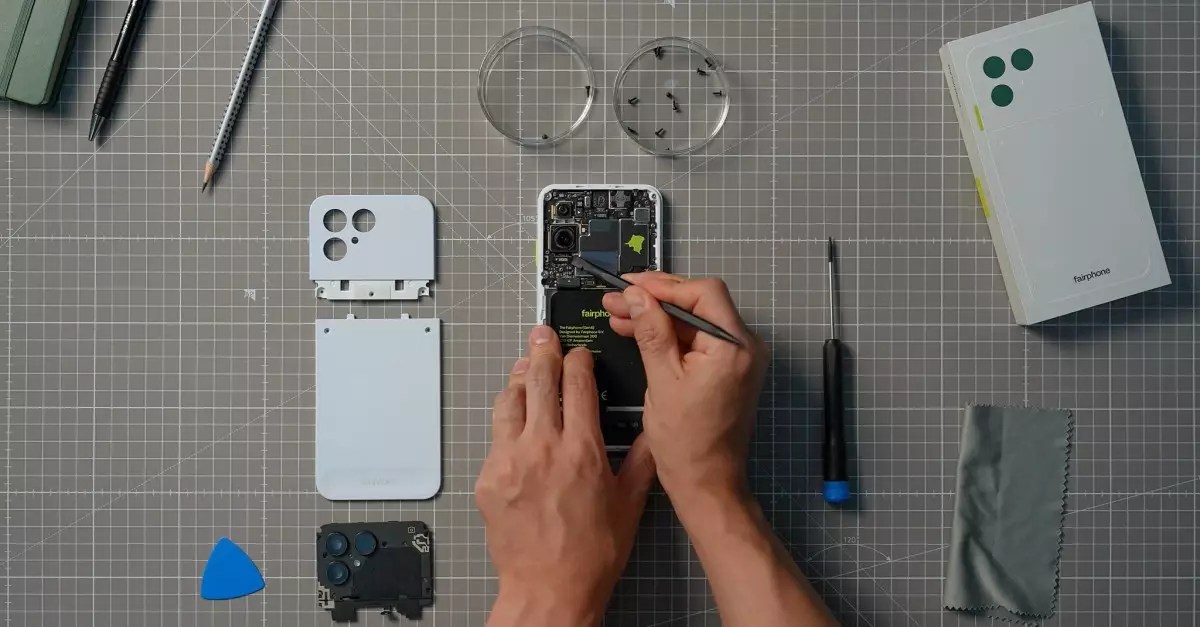The release of the Fairphone 6 marks a compelling shift in how we perceive smartphone manufacturing, emphasizing sustainability, repairability, and user empowerment over mere specs and fleeting trends. While many flagship phones prioritize cutting-edge hardware and innovative features, they often neglect the inevitability of repair and the environmental toll of electronic waste. Fairphone, through its relentless focus on modular design and long-term support, challenges this norm, pushing the industry toward a more ethical and sustainable future. The fact that the Fairphone 6 continues its streak of perfect scores in iFixit’s teardown tests underscores a deep-rooted commitment to repairability—a quality most other devices have forsaken for sleeker, less serviceable designs. This phone isn’t merely a device; it embodies a philosophy that values durability, user autonomy, and ecological responsibility.
Design Philosophy: Simplicity Meets Practicality
Unlike many modern smartphones that hide components beneath glued panels and soldered chips, the Fairphone 6 is engineered for the end user, not just for sleek aesthetics. Its smaller, more modular form retains the hallmark repair-friendly features that define the brand. The use of only seven screws throughout the device simplifies the process of swapping out key components, notably making the battery replacement straightforward despite the removal of tool-free access in recent models. The reduction of glue and the strategic placement of screws illustrate a thoughtful balance between lightweight design and practical repairability. Fairphone’s decision to include only a screw-based fastening system, including for the soft-pouch battery, reflects a core belief: repairability should be simple, accessible, and empowering, not a daunting task for the average user.
Performance Trade-offs and User Expectations
While the Fairphone 6 excels in repairability and sustainability, it sacrifices some high-end specs that power users might expect from flagship-tier phones. Its dual-camera setup is modest, catering to casual photography rather than professional imaging, and the Qualcomm Snapdragon 7S Gen 3 chipset cannot compete with the latest flagship processors in raw performance. Additionally, the USB 2.0 port may disappoint in an era of blazing-fast data transfer speeds, signaling a compromise for the sake of modular design and repair independence. However, the 6.3-inch LTPO OLED display with a 10-120Hz refresh rate moves toward premium quality, offering vibrant visuals and smoother interactions. These trade-offs are deliberate, illustrating a different set of priorities: longevity, user repairability, and ethical considerations over bleeding-edge specs. The Fairphone 6 appeals to those who value environmental responsibility and device longevity over fleeting hardware performance.
Commitment to Support and Sustainability
Fairphone’s promise of seven years of Android updates and eight years of security patches is a rarity in the smartphone industry. It demonstrates their dedication not just to creating a repairable device but also to ensuring that the device remains secure and functional over an extended period. The five-year warranty and loyalty program incentivize consumers to retain and repair, reducing electronic waste and fostering a culture of sustainability. This approach starkly contrasts with the typical cycle of planned obsolescence seen with many high-tech devices designed for rapid replacement. Fairphone’s model seeks to redefine consumer expectations, positioning repairability and long-term support as core features rather than afterthoughts.
Market Position and Consumer Appeal
In Europe, the Fairphone 6 is priced at about €599, positioning it as a mid-tier device that emphasizes its ethical and repairable credentials. The US market tells a different story, with the device retailing at $899 and shipping with Murena’s de-Googled /e/OS—highlighting a commitment to user privacy and open-source software. While the price may seem steep compared to mainstream smartphones with similar specs, the true value lies in its repairability, longevity, and sustainability. It challenges consumers to rethink their buying habits, prioritizing durability and ethics over flashy features and obsolescence-driven upgrades. Preorders are open, with shipments beginning in August, signaling a growing niche of environmentally conscious and repair-minded users.
The Fairphone 6 isn’t just another smartphone; it’s a movement toward a more responsible approach to technology. Its perfect scores in repairability tests, combined with long-term support commitments, demonstrate that a device can be both functional and sustainable. Amid the relentless march of tech innovation, Fairphone’s commitment to making repairability accessible and promoting a circular economy forces the market to reconsider what a “smartphone” should truly be. It’s a bold declaration that durability, repairability, and environmental consciousness can coexist with increasingly digital lifestyles, inspiring a shift that might just redefine the industry standards for years to come.


Leave a Reply